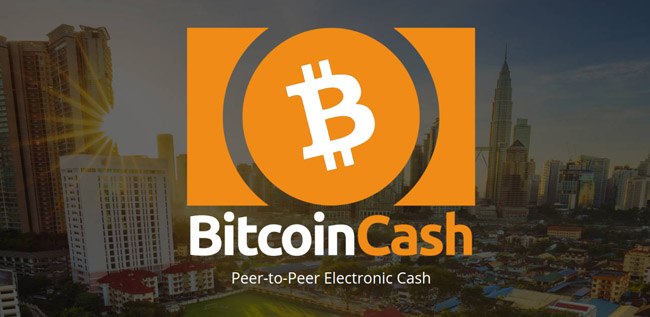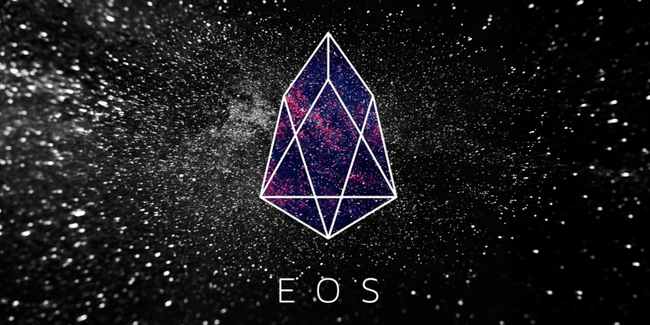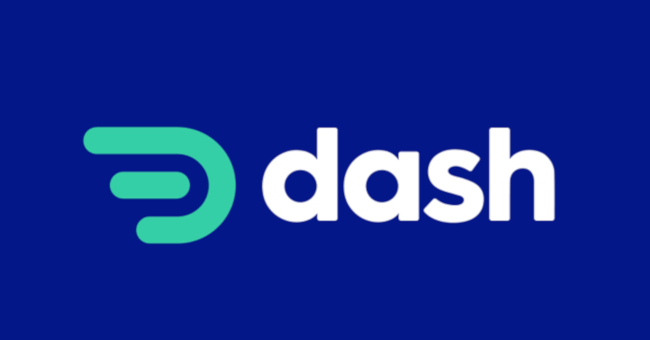Bitcoin began a revolution in decentralization and transparency, and will always be remembered for creating massive wealth for early adopters. While Bitcoin still dominates cryptocurrency markets, with a bit over 50% of the total market capitalization of all cryptocurrencies being in Bitcoin, there have been signs that it might be losing its tight grip as the top gaining cryptocurrency.
In fact, Bitcoin has remained in a bear market for much of 2018, and while most altcoins are following its lead, there have been some that have begun to march to their own beat to some extent.
These leading altcoins could be the next wave of cryptocurrencies to take over and lead the overall market. And if that’s true you’ll definitely want to have a stake in some, or all of them.
I don’t have a crystal ball, so it’s impossible to say with certainty which altcoins might vie for the crown of the next Bitcoin, but I can certainly make some educated guesses.
There are honestly dozens of coins these days that have solid development teams, a good vision, and the possibility of becoming the next great cryptocurrency. Below are 5 cryptocurrencies that could become the next Bitcoin.
5 Cryptocurrencies that Could Overtake Bitcoin
The Next Bitcoin: Bitcoin Cash

Bitcoin Cash was created by a team of people who forked the bitcoin blockchain ledger. It is now controlled by multiple independent teams of developers. It is now one of the newest of the popular cryptocurrencies, having come into existence in August 2017 as part of a hard fork of Bitcoin.
A hard fork is when a new blockchain is created that contains all the past information from the original coin, in this case Bitcoin, but going forward it operates separately from the original coin. Bitcoin Cash was created because some users were frustrated with the high fees and slow processing times of Bitcoin.
There are even some who say Bitcoin Cash is the “real” Bitcoin, and thus the divide between Bitcoin and Bitcoin Cash continues. Who knows, if Bitcoin Cash can garner widespread adoption it could one day overtake Bitcoin as the top coin.
Why I believe in it
Whether or not it is the “real” Bitcoin, it is obvious that people believe in Bitcoin Cash. Plus, I do see it as a superior transactional coin when compared with Bitcoin. Given the strong backing it currently receives, and the adoption by businesses of Bitcoin Cash as a payment method (while some are simultaneously getting rid of support for Bitcoin payments), I think Bitcoin Cash could be a superior “safer” choice by the end of 2018 and beyond.
The Next Bitcoin: IOTA

IOTA is unique in that it is the first cryptocurrency that hasn’t been developed using blockchain technology. Instead it uses a different distributed ledger architecture that that is technically known as Directed Acyclic Graph (DAG), but which the IOTA development team calls the “Tangle”.
This new and unique architecture has allowed IOTA to already achieve three major milestones in the cryptocurrency world; zero-cost transactions, offline transactions, and infinite scalability. With no transaction fees and the ability to scale infinitely some are hailing IOTA as a replacement not only for Bitcoin, but for blockchain in general. Certainly there are an increasing number of projects using DAG technology in favor over blockchain technology.
IOTA also differs from other coins mentioned above in that it is concerned with providing machine-to-machine transactions, also known as the Internet of Things. IOTA’s developers contend that in the near future machines will handle many different kinds of transactions without any intervention from humans, and that a technology such as IOTA and the Tangle will allow them to do so.
It remains to be seen whether or not they’re right, but several large corporations are backing IOTA and betting on the technology working well for business-to-business transactions.
Why I believe in it
IOTA suffered a setback in December due to some mis-communicated partnership announcements. Even so, the price of IOTA nearly tripled in December, despite some extensive FUD and volatility in the coin price.
Of course the price has declined along with the overall crypto market in 2018, and as of September 2018 the price is little changed from that a year earlier. While some questions remain regarding the current centralized state of IOTA and the use of new and untested technologies, the unique Tangle network deserves attention and IOTA could explode in the coming years.
The three major industrial partners of IOTA – Volkswagen, Bosch and Fujitsu – certainly seem to have great confidence in the project and have been expanding the partnership and unveiling new technologies based on IOTA’s Tangle.
The Next Bitcoin: EOS

The EOS coin was developed by Dan Larimer, and is his third foray into cryptocurrencies as he was also the developer behind Bitshares and the Steemit project. Unlike most cryptocurrencies, EOS is built on a proof of stake system, meaning there is no mining. Instead those who hold EOS coins receive periodic payments of more EOS coins. Kind of like a dividend for holding the coin and securing the network.
It also features 10,000+ transactions per second, as well as parallel processing for those who launch DAPPS on the EOS network. Finally, EOS is able to communicate with other blockchains, which is a notable achievement, though one that is underutilized so far. EOS is fairly new, with the genesis block coming on July 1, 2017, but is rapidly gaining in popularity and the coin is already in the top 10 by market cap of all cryptocurrencies with a market cap that exceeds $4.6 billion as of September 2018.
Why I believe in it
EOS has seen its coin increase by nearly 1,000% since last September, which is good considering the bear market that’s gripped cryptocurrencies throughout much of 2018. The project itself finished its year-long ICO this past June, and it raised over $4 billion. That makes it the largest ICO ever, and is proof of the confidence investors have in the project. The fact that the project has high transaction speeds, no fees and no need for forks to perform upgrades, make it a possible successor to Bitcoin.
The Next Bitcoin: Stellar Lumens

The Stellar Lumen is the coin used to avoid transaction spam in the Stellar network. It was created in 2014 with the symbol STR and called Stellar, but was renamed Lumens in March 2015 to avoid the confusion created by having the coin named the same as the network.
At that time all holders of Bitcoin also received some Stellar Lumens coins. Many non-profits also received coins at that time as a sort of airdrop. There were 100 billion coins created at the time, which is quite huge in the cryptocurrency world. At the beginning of 2017 each Stellar Lumen was worth 0.0025, but as of this writing they are worth 0.195443 each.
The price of Stellar has held up well throughout the bear market of 2018, and Stellar is currently the #6 coin by market cap, just behind EOS. Stellar has recently partnered with IBM to enable cross-border payments, which gave the coin price a definite boost when the news was released, and could be something that catapults it into one of the top coins ever.
Why I believe in it
Money transfer is a huge need in today’s world, and Stellar Lumens is on-track to provide that service at a fraction of the cost of current banking and online methods. Plus it can do it nearly instantaneously, meaning you could shoot $1000 to your backpacker buddy in Thailand and he will receive it within seconds and in Thai baht besides, regardless what currency or cryptocurrency you send.
Stellar already has partnerships with IBM and KlickEx for cross-border payments. The coin doubled in December, but dropped back as the entire market retreated in 2018. It also doubled in April during the mini-rally in cryptomarkets. On a technical basis the $0.20 level seems to be supportive for price, having held three times already in 2018.
The Next Bitcoin: DASH

At DASH’s core is a unique fully-incentivized peer-to-peer network. Miners are rewarded for securing the blockchain and masternodes are rewarded for validating, storing and serving the blockchain to users. In this respect it is little different to Bitcoin. There are differences to DASH however, such as additional security and anonymity baked into the transactions.
Transactions made with Dash are private, secure and untraceable. Transactions are nearly instantaneous, and fees are extremely low, in some cases non-existent. It was originally launched in January 2014 as XCoin, was rebranded DarkCoin the following month, and in March 2015 was finally rebranded to DASH, which is a portmanteau for “Digital Cash”.
Why I believe in it
Dash has been around for a long time, not as long as Bitcoin to be sure, but longer than most of its brethren blockchain projects. The Dash focus on anonymity and security have given it quite a boost, as one of the important characteristics of cryptocurrencies for many enthusiasts is the privacy aspect.
With low fees and nearly instantaneous transactions Dash is a step above Bitcoin, and the market has rewarded it by taking it to the #11 spot by market cap. Some have criticized Dash for being run as a for-profit venture since day 1, but that’s just the mindset that sees it continue to forge partnerships.
The Next Bitcoin: Conclusion
Bitcoin has ushered in a new era of currency. No matter how the traditionalists feel about Bitcoin and newer cryptocurrencies they are here to stay. Fiat currencies may continue to live alongside them sure, but commerce will increasingly see adoption of cryptocurrencies.
Which cryptocurrency is the big question.
So many projects remain in alpha or beta, existing on testnets, or as little more than a whitepaper and a vision. The five projects highlighted above have stood the test of time, short as it may be for cryptocurrencies. They are proven and on the path to greater adoption and visibility.
Will any of these 5 become the next Bitcoin? Possibly. Even if they don’t I believe all will survive and will become important to global commerce, whether on a retail level, or more in the background through the Internet of Things, or through business transactions.
Keep an eye on these five coins and you could see great things.